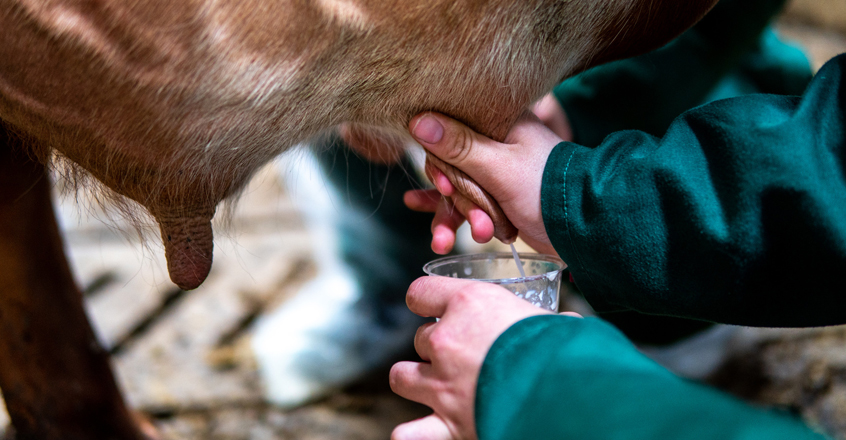

The public debate over raw vs. pasteurized milk is a great example of what Dr. Campbell describes as “nutrient isolationism.” Proponents of raw milk claim that pasteurization destroys important vitamins, while opponents worry over the pathogenic bacteria that may be present in raw milk. In a systematic review of the effects of pasteurization of milk, researchers concluded the effect on the nutritive value of milk is minimal.[1]
Rather than looking at specific nutrient values in raw and pasteurized milk to determine whether to consume it, we should be evaluating cow milk as a whole. Cow milk contains an array of problematic elements that have shown to be detrimental to health. Milk is species specific. Goat milk, like cow milk or human milk is adapted to meet the needs of their offspring. The makeup of milk varies between species, depending on specific needs, for instance, growing hoofs for cows or softer nails for humans. Though the protein casein is found in all species of milk, it is found in a much smaller amount in human milk–about 0.2% by weight in human milk[2] compared to 4% in cow milk and 3.25% in goat milk.[3]
Consumption of cow milk (even raw) seems to stimulate the production of IGF-1 (insulin-like growth factor-1) in the bloodstream.
Of most concern is casein, the primary protein in cow milk. The amount of casein in milk does not change whether the milk is raw or pasteurized. Casein has been shown to stimulate reproduction of cancer cells in a wide body of studies that are included in The China Study.[4] Cow milk consumption is linked to increased risk of hormone driven cancers, like breast and prostate cancers. This is believed to be true because the consumption of cow milk (even raw) seems to stimulate the production of IGF-1 (insulin-like growth factor-1) in the bloodstream.[5] IGF-1 is a potent prostate cancer stimulus and also contributes to premature puberty in children.
Finally, cow milk lacks important nutrients that are disease-preventing, like fiber, and contains cholesterol which can contribute to heart disease. Casein from cow milk can also interfere with the absorption of iron and vitamin D in the digestive tract.[6] And consumption of cow’s milk in early childhood has been under investigation as a contributing factor to type 1 diabetes.[7]
The findings from The China Study indicate that the lower the percentage of animal-based foods (cooked and raw) that are consumed, the greater the health benefits—even when that percentage declines from 10% to 0% of calories.[8] So it’s not unreasonable to conclude that the optimum percentage of cow milk is zero.
Copyright 2025 Center for Nutrition Studies. All rights reserved.